The Beauty Brief
Beauty, for us, isn’t about trends — it’s about craft, emotion, and evolution.
In The Beauty Brief, we explore the most significant launches of the season: perfumes that linger in memory, makeup that feels like design, skincare that reflects modern luxury. Each story looks deeper than the product itself — at the hands, ideas, and heritage that shape it. This page is updated regularly with the newest releases and timeless objects of beauty — designed for readers who want to understand not only what’s new, but why it matters.
On this page:
Chanel Les 9 Ombres
Hermès Autumn Winter Limited Edition
Chanel Les 4 Ombres Boutons
Louis Vuitton Beauty
Chanel Les 9 Ombres






The Collection
Chanel’s new Les 9 Ombres palettes are a study in light and imagination — a trio of harmonies created by the Comètes Collective. Each palette offers nine shades instead of the usual four — an expanded canvas for creativity — and each with distinct finishes: matte, satin, metallic, and pearly.
The Daring Muse by Ammy Drammeh is an ode to confident imperfection. She blends copper, deep green, and warm rose into a colour story that feels tactile, alive. “I wanted to capture the feeling of skin meeting sunlight,” she says. “It’s not about flawlessness — it’s about movement, warmth, and emotion.” On the eyes, the palette moves easily from diffused radiance to bold intensity — think late-afternoon glow that lingers into night.
The New Singular by Cécile Paravina takes a different path: a collision of sienna, lilac, and mint, soft neutrals against the unexpected. “For me, colour is architecture,” Paravina explains. “I like to build dimension through contrasts — calm next to chaos, softness next to edge.” The result is quietly avant-garde: wearable but subversive, like tailoring with a flash of lining.
The Space Traveler by Valentina Li feels the most ethereal — mauve, midnight blue, and gold suspended in cosmic shimmer. “Makeup is atmosphere,” she says. “Each shade changes the air around you.” On skin, the effect is dreamlike yet grounded, the kind of radiance that reads as a galactic mood.
Together, these palettes feel like short stories — voices sharing a common love for texture, emotion, and light.
Why We Love It
Les 9 Ombres offers something different for Chanel and for its beauty lovers. With nine shades instead of the house’s usual four, there’s room to play, to experiment, to create new colour stories every day. The range of finishes invites layering and exploration: mattes for depth, satins for softness, metallics for impact, pearls for light.
It’s a palette that feels generous in possibility. Each harmony carries its own rhythm, yet all share Chanel’s signature dna of precision. This is makeup for women who understand luxury as freedom — the freedom to create, to re-imagine, to choose who they want to be each morning.
For the holidays, I already know the looks I can’t wait to create. The Daring Muse is definitely a warmer palette — I’ll use the browns, coppers, and golds for a glowing, candlelit eye look that feels rich but effortless. The New Singular is the most editorial of the three — I imagine using the purple, pink, and pearly white in the inner corner, finishing with the matte black for a sharp, almost 60s-inspired wing. And The Space Traveler, perhaps my favourite, is pure winter fantasy — I’d layer the two blues with a wash of pink, fade it softly with black, and add a pop of pearly white for light that moves when you do. There are so many directions you can take with these palettes — warm, cool, minimal, dramatic. I know I’ll be changing up my makeup looks with these all winter.
Editor’s Note Igrien
Product
Chanel Les 9 Ombres — High-Intensity Eyeshadow Palette
Editions
847 The Daring Muse – copper, rose, and green tones for radiant, confident looks
848 The New Singular – sienna, lilac, and mint contrasts for modern experimentation
849 The Space Traveler – mauve, midnight blue, and gold for ethereal depth
Finishes
Matte, satin, metallic, and pearly
Notes
Finishes
Matte, satin, metallic, and pearly
Formula
Ultra-pigmented and blendable textures designed to layer light and colour
Artists of the Chanel Comètes Collective
Ammy Drammeh
Cécile Paravina
Valentina Li
Published
10 November 2025
Visuals
Courtesy of Chanel
Details
Hermès Autumn-Winter limited edition:
Geometry and Richness




This season, Hermès Beauty steps into the spotlight with a collection that speaks the language of circles and squares, of colour and light, of structure and softness. Conceived under the artistic direction of Gregoris Pyrpylis, the Autumn-Winter 2025 limited-edition is more than a seasonal palette; it’s a meditation on geometry and emotion, design and identity.
“The circle and the square are at the root of every Hermès Beauty object and creative intention,” Pyrpylis explains — a poetic statement that sets the tone for this collection. From the optical interplay of packaging to the measured hues inside, the idea is simple: when structure meets imagination, beauty gains depth.
The Collection
The colour story feels distinctly autumnal — elegant, slightly nostalgic, and undeniably refined. Rich rosewoods and smoky mauves evoke the muted warmth of fading daylight; deep teals and iridescent purples nod to twilight; while golds and greens offer quiet brightness, like light caught on silk.
The textures are equally thoughtful — suede-matte lips, satin shadows, glassy nails — each one precise, deliberate, and tactile. There’s movement in the stillness here: a geometric rhythm that feels Hermès through and through.
Why We Love It
Because this is beauty for the season we slow down. The palette feels grounded — wearable yet expressive — the kind of tones that transition easily from day to night, from subtle to statement.
We love how the eyeshadow palette dares to be bolder than usual for Hermès Beauty, playing with contrast and reflection without tipping into excess. And, as always, the formulas deliver the quiet luxury we expect — creamy, blendable, weightless.
It’s beauty with composure — timeless, architectural, and quietly modern, proving once again that Hermès doesn’t need to reinvent itself to remain ahead. It just needs to keep refining.
I always marvel at anything Hermès comes out with, beauty releases included. I’m not that daring when it comes to makeup looks but somehow I have found the colourful eyeshadow palettes released by Hermès to work wonderfully on my complexion. It’s subtle for every-day wear and playful when you want to turn it up a notch. The Rouge Hermès lipsticks are criminally underrated in the beauty world, though true beauty lovers will know how satin-like the application is, how vibrant the colours and how smooth on the lips the colours remain all day. It’s only October but I cannot wait to play more with the collection when the holidays come.
Editor’s Note Igrien
Creative Director
Gregoris Pyrpylis
Key Products
Rouge Hermès in three new shades: 24 Rose Épure, 55 Rose Mauve and 69 Rose Primaire
Ombres d’Hermès 12 Ombres Optiques palette
Les Mains Hermès nail enamels in three new shades: 89 Violet Byzantin, 79 Jaune Impérial and 91 Vert Écossais
Notes
Sustainability note
Refillable cases across lipsticks and palette editions
Published
22 October 2025
Visuals
Art by Igrien
Courtesy of Hermès
Details
Chanel Les 4 Ombres Boutons:
Where Fashion Meets the Face

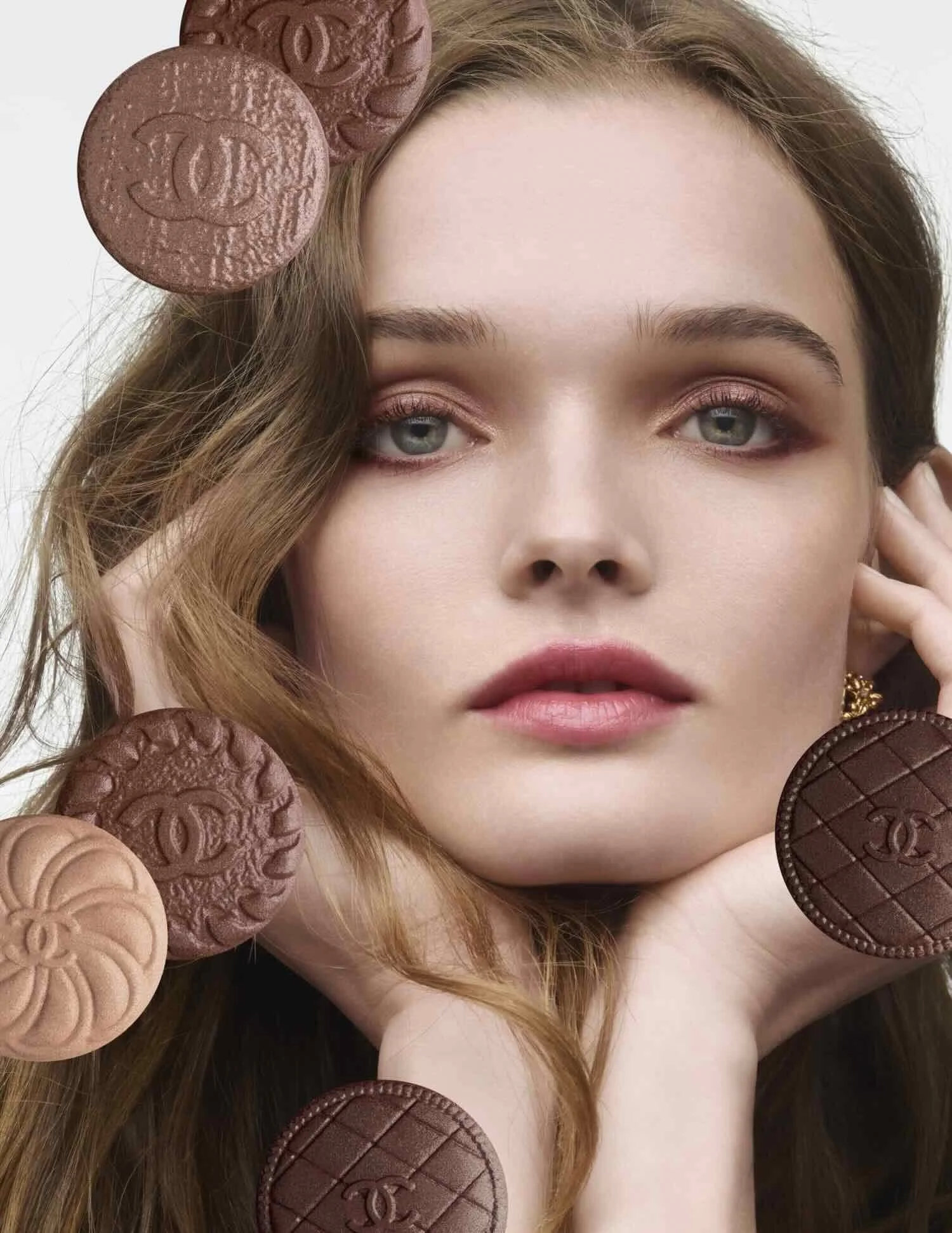
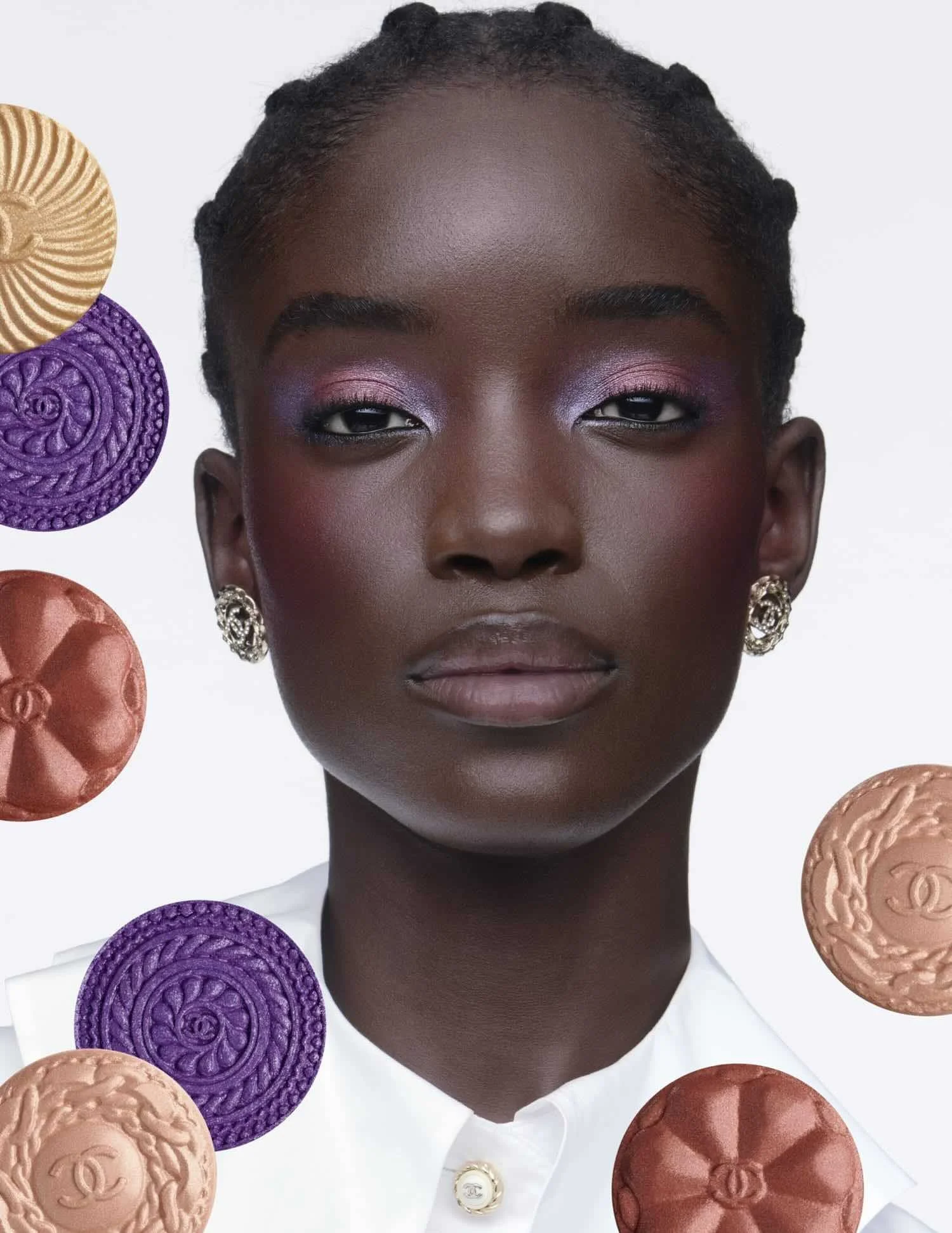
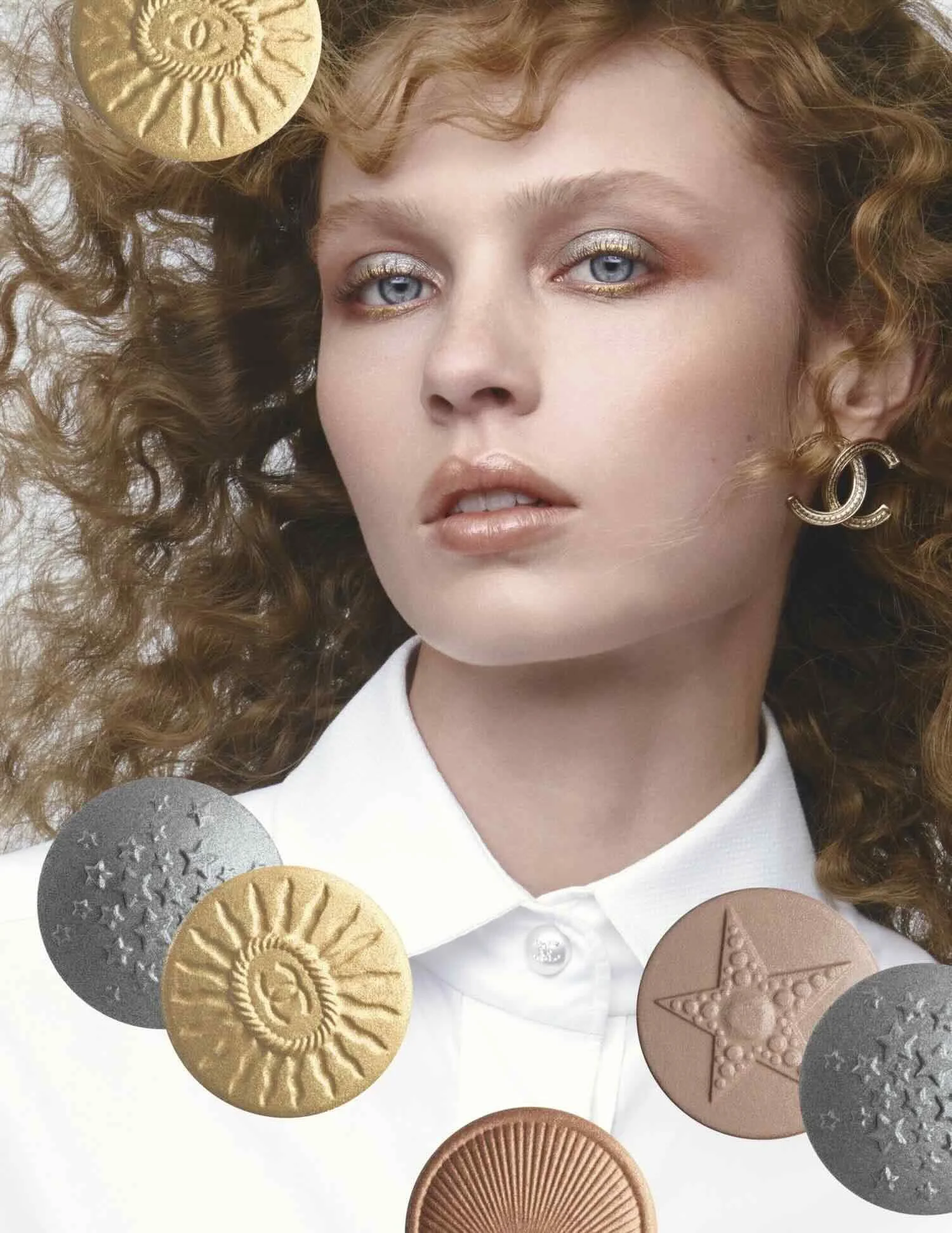
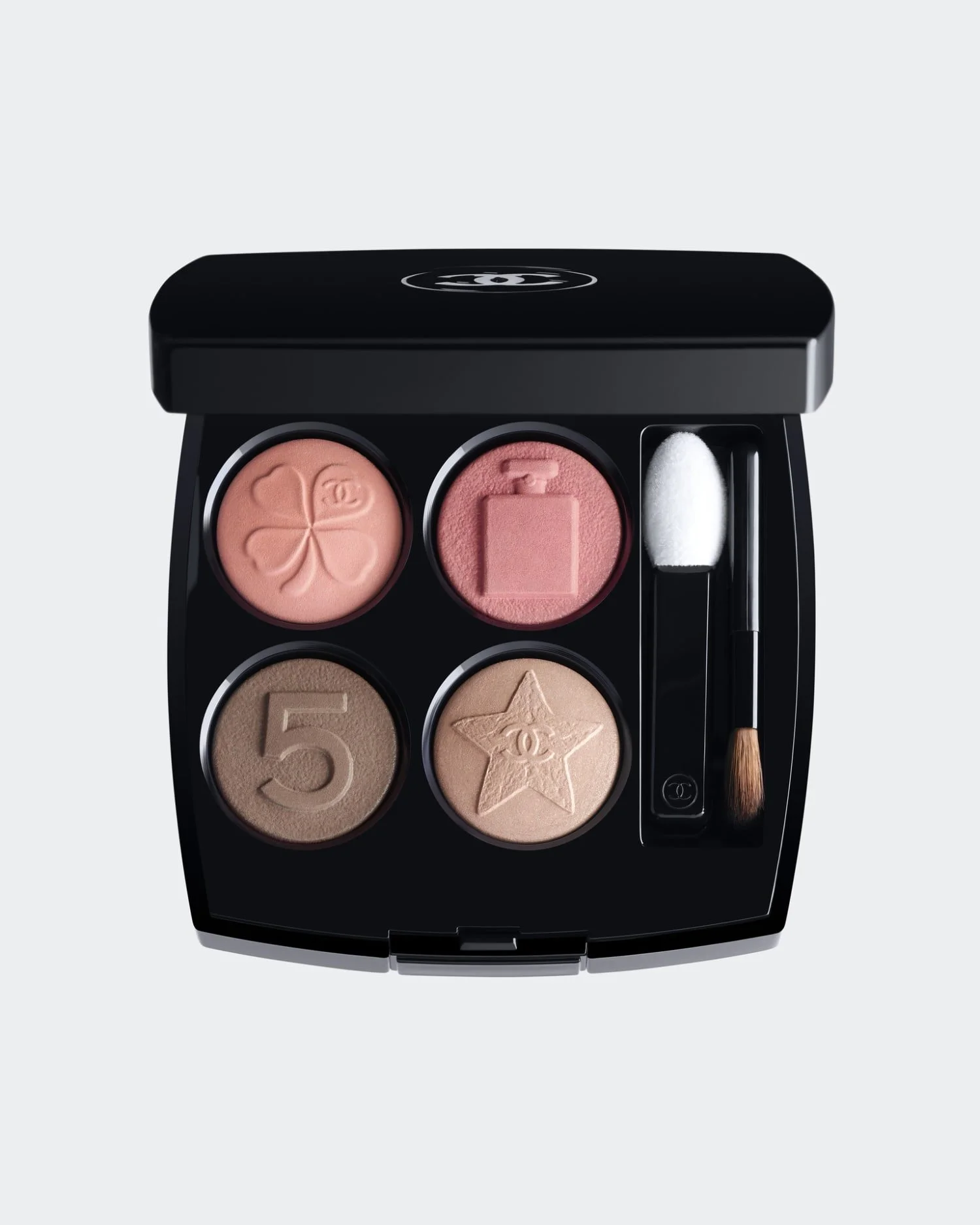
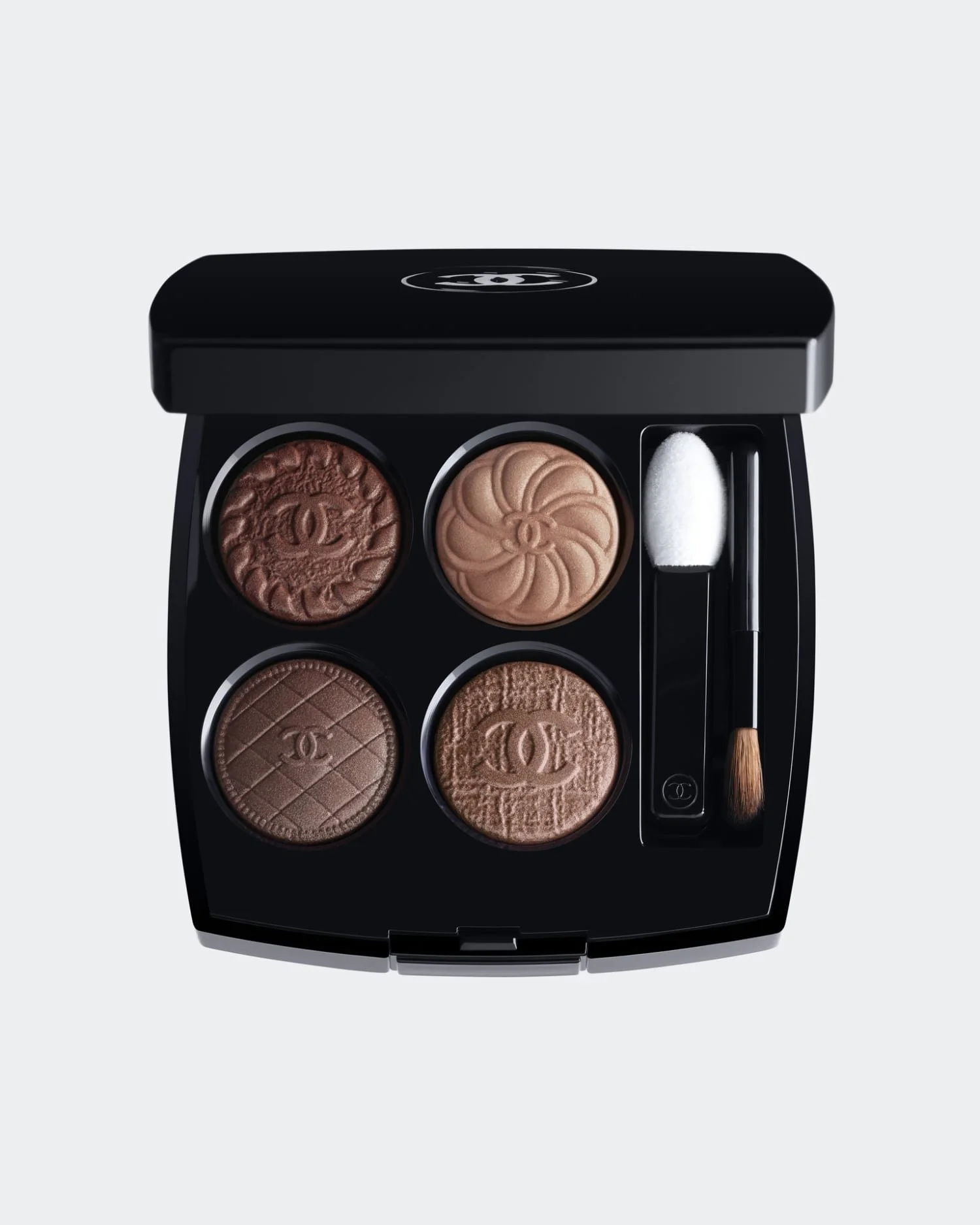

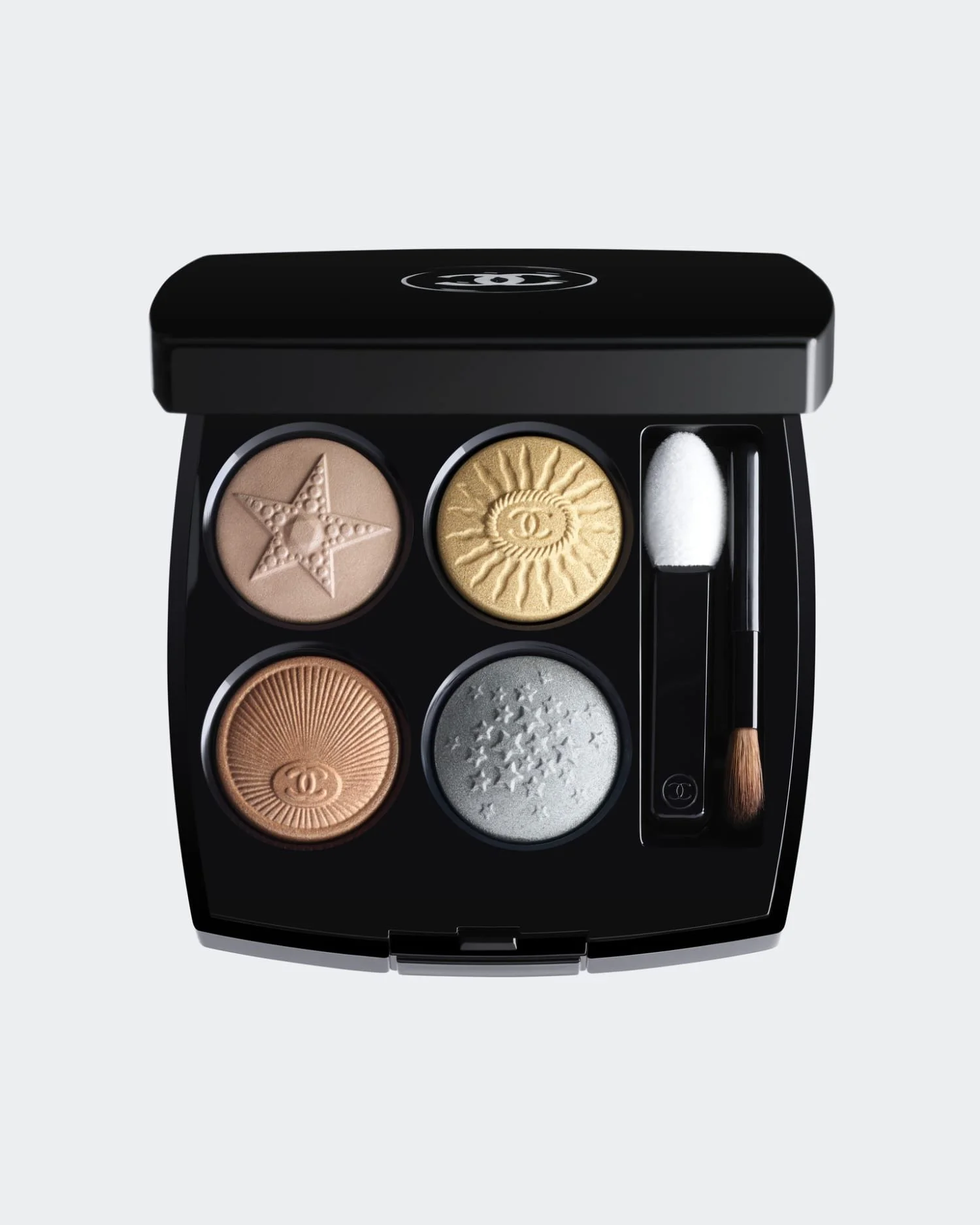




There’s something about Chanel — the way every release feels inevitable, as though it already existed before we even saw it. Chanel doesn’t follow beauty trends; it creates its own. The new Les 4 Ombres Boutons collection — part of the house’s ongoing dialogue between couture and beauty — is a perfect example of that. It’s not just makeup. It’s a continuation of the maison’s language, one that translates craftsmanship, texture, and codes from the atelier to the vanity.
What makes this collection stand out is its precision. The Comètes Collective, Chanel’s constellation of makeup artists and visionaries, has elevated the brand’s beauty universe to something more conceptual — more couture. Their work isn’t just about color; it’s about continuity. With Les 4 Ombres Boutons, they’ve taken one of Chanel’s most iconic details — the button — and turned it into something deeply poetic. Each palette is embossed like a couture jacket, the textures echoing fabric and form.
The shades themselves — like those in Star Buttons, a mix of bronze, champagne, and dusty pink — have the subtlety of tweed and the luminosity of silk. They blend like memory, soft and dimensional, designed not to transform the face but to reveal it. There’s a softness to the shimmer, a deliberate restraint that feels unmistakably Chanel. You sense the discipline of the house in every brushstroke — elegant, controlled, never loud.
But the Comètes Collective brings something else: a shift in how we see beauty. It’s no longer an accessory to fashion; it’s part of the same conversation. Their collaborative approach — artists working in dialogue rather than isolation — feels modern, even radical in its humility. It mirrors what Chanel has always stood for: that true luxury lies in refinement, not reinvention.
And yet, even with all this history, Chanel never feels nostalgic. Each launch — from Les Beiges to Noir Allure to Les 4 Ombres Boutons — feels like an evolution rather than an echo. The designs are timeless, but the thinking is alive. There’s always a new way to experience what we thought we already knew.
Perhaps that’s the magic of Chanel — the ability to make continuity feel like discovery. The house doesn’t chase novelty; it cultivates it, layer by layer, in detail, in gesture, in restraint. Beauty becomes not just a surface, but a philosophy — one that moves seamlessly between a runway, a palette, and a face.
The Object
The Les 4 Ombres Boutons palette pays homage to Chanel’s couture heritage, with each compact embossed to resemble the house’s signature buttons — those found on its iconic tweed jackets. The design is tactile, deliberate, and beautifully restrained, echoing the maison’s belief that every detail should carry meaning.
The Shades
In Star Buttons, tones of champagne, rose gold, and soft bronze create a balance between luminosity and depth. The texture feels almost fabric-like — satin in some lights, velvet in others — blending seamlessly for a finish that’s less shimmer, more sheen. Each hue is wearable yet dimensional, proof that refinement doesn’t require excess.
The Craft
Developed by the Comètes Collective, Chanel’s global team of makeup artists, the collection marks a shift toward a more couture-inspired vision of beauty. Their approach mirrors the process of an atelier: collaboration, experimentation, precision. Each product is conceived as an object of craftsmanship, not just color.
Notes
The Connection
The palette bridges the house’s two worlds — beauty and fashion — through shared codes of texture, structure, and emotion. The buttons link back to Gabrielle Chanel’s design legacy, while the artistry of the Comètes Collective translates that legacy into pigment and light.
The Philosophy
Chanel’s strength has always been in its ability to evolve without breaking continuity. Les 4 Ombres Boutons reflects that balance — modern, but grounded in timelessness; simple, but never minimal. The palette embodies the maison’s larger truth: that beauty, like fashion, is about discipline, design, and the quiet luxury of intention.
The Takeaway
This is Chanel at its most precise — beauty that behaves like couture. Not trend-led or performative, but enduring. A reminder that in the right hands, even something as small as a button can hold an entire story.
Details
Published
1 October 2025
Visuals
Courtesy of Chanel
Published: Autumn 2025
Louis Vuitton Beauty:
a Luxury Object
The images gleam like relics in a museum: Louis Vuitton’s monogram pressed into lacquered compacts, Pat McGrath’s name etched into gold. Yet the reaction was awe, but also hesitation. Was this beauty, or was this branding at its most extravagant? In a market already saturated with serums promising radiance and blushes promising reinvention, Vuitton’s debut arrives as a provocation. The truth is, beauty has run out of tricks. Launches fall with dizzying frequency, each swearing it will transform your skin, your mood, your life. Few do. And so, Vuitton doesn’t even try. Its solution is not better formulas or bolder pigments—it’s to climb higher, to make beauty more unattainable, more precious, more rare. When innovation stalls, luxury becomes the trick.
The fatigue is real
Shelves blur into sameness: the glow, the gloss, the endless blush drops. Every brand promises transformation, but the language is recycled, the surprise gone. For years, the rise of celebrity and influencer-led brands kept the momentum going—each launch felt like an event, each product a cultural moment. Now, the sheen has worn thin. What was once a playground of discovery feels like déjà vu. Consumers aren’t dazzled; they’re tired. Beauty has hit a ceiling: innovation is rare, delight rarer still. Against this backdrop, Vuitton’s debut reads less like revelation and more like escape—away from the overcrowded middle and into a higher, shinier, rarified tier.
Louis Vuitton is raising its altitude
This isn’t a lipstick to toss in your bag or a palette to swipe open on the train. It’s beauty repositioned as heirloom, with Vuitton’s monogram as proof of permanence and Pat McGrath’s artistry as seal of authority. Where most brands fight for visibility in the same crowded space, Vuitton sidesteps the fray entirely by inventing a new category: ultra-luxury beauty. The prices are staggering, but that is the point. These products don’t compete with Dior mascara or Fenty foundation. They sit beside Vuitton trunks and fine jewelry—objects to be admired, displayed, and collected. What’s inside the compact matters less than the compact itself. Vuitton isn’t selling makeup; it’s selling makeup as couture.
The consequences ripple beyond Vuitton
Beauty has long been fashion’s most democratic entry point—one lipstick, one nail polish, and you could carry a fragment of luxury in your pocket. Vuitton rewrites that story. By pricing beauty at the level of heirlooms, it transforms makeup from a tool of expression into an object of exclusion. Lipstick becomes untouchable, too precious to use. Makeup risks moving from the vanity to the vitrine.
And yet, the move is revealing. Vuitton acknowledges what the rest of the industry resists: consumers are weary of being sold the same product in slightly shinier packaging. Its solution is to sell not pigment but permanence, not transformation but testimony. The danger is clear. If others follow suit—not with creativity, but with inflated prices—beauty’s most playful, intimate category risks becoming a performance of ownership. What happens when the joy of beauty is priced out of reach?
Once, beauty was fashion’s most democratic promise: a small indulgence, a daily ritual, a way to experiment with selfhood. Vuitton reframes that promise as spectacle. In place of invention, elevation. In place of play, preservation. Makeup becomes less about wearing and more about owning.
Perhaps that is Vuitton’s true statement: if desire can no longer be ignited by pigment or formula, then it must be conjured by scarcity, spectacle, and price. But in the process, beauty risks losing its intimacy—the skin, the mirror, the touch. Fashion may always have been about dreaming, but beauty was about doing. And when beauty becomes too rare to touch, it stops being beauty at all—but transforms into a collectible of status.

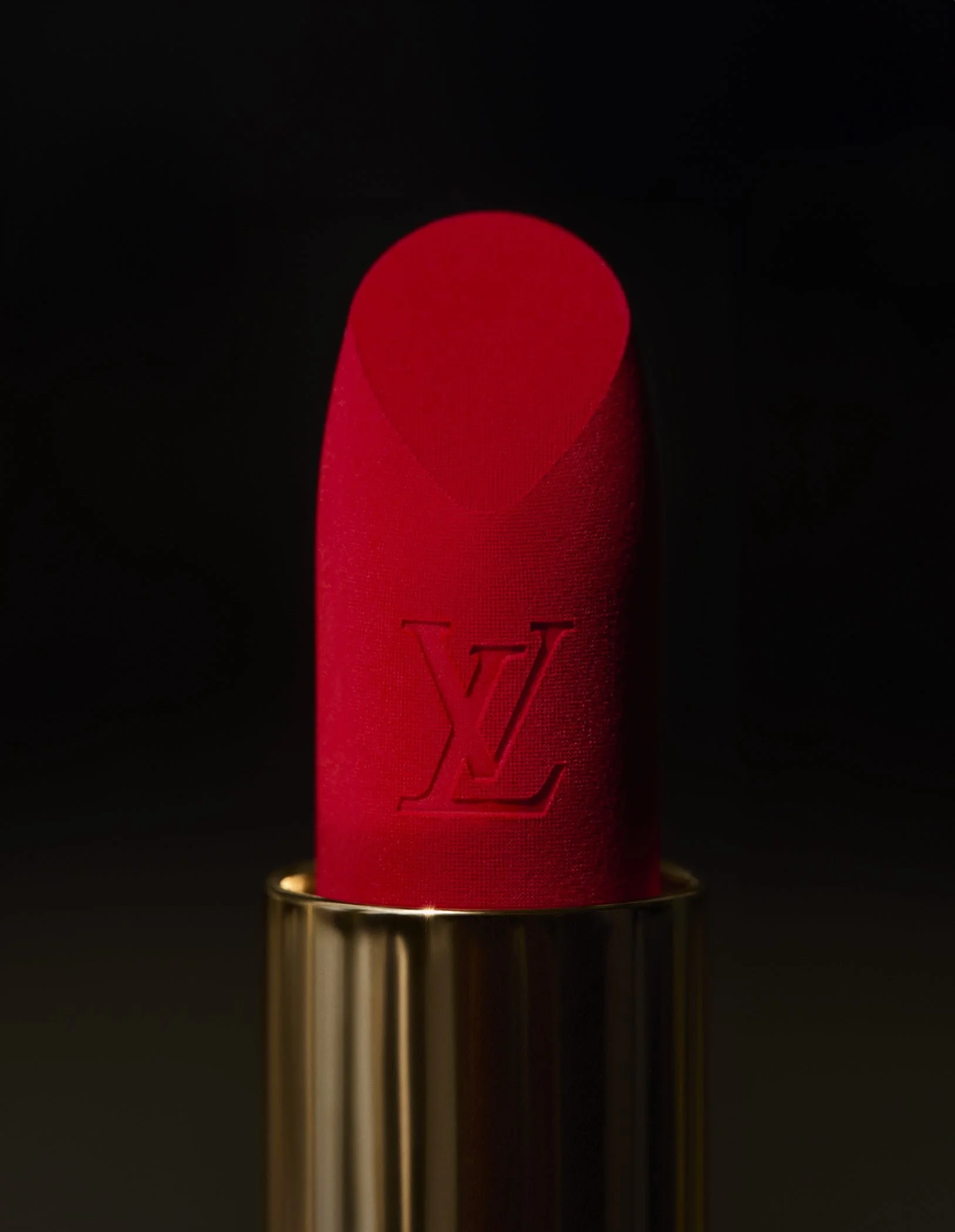
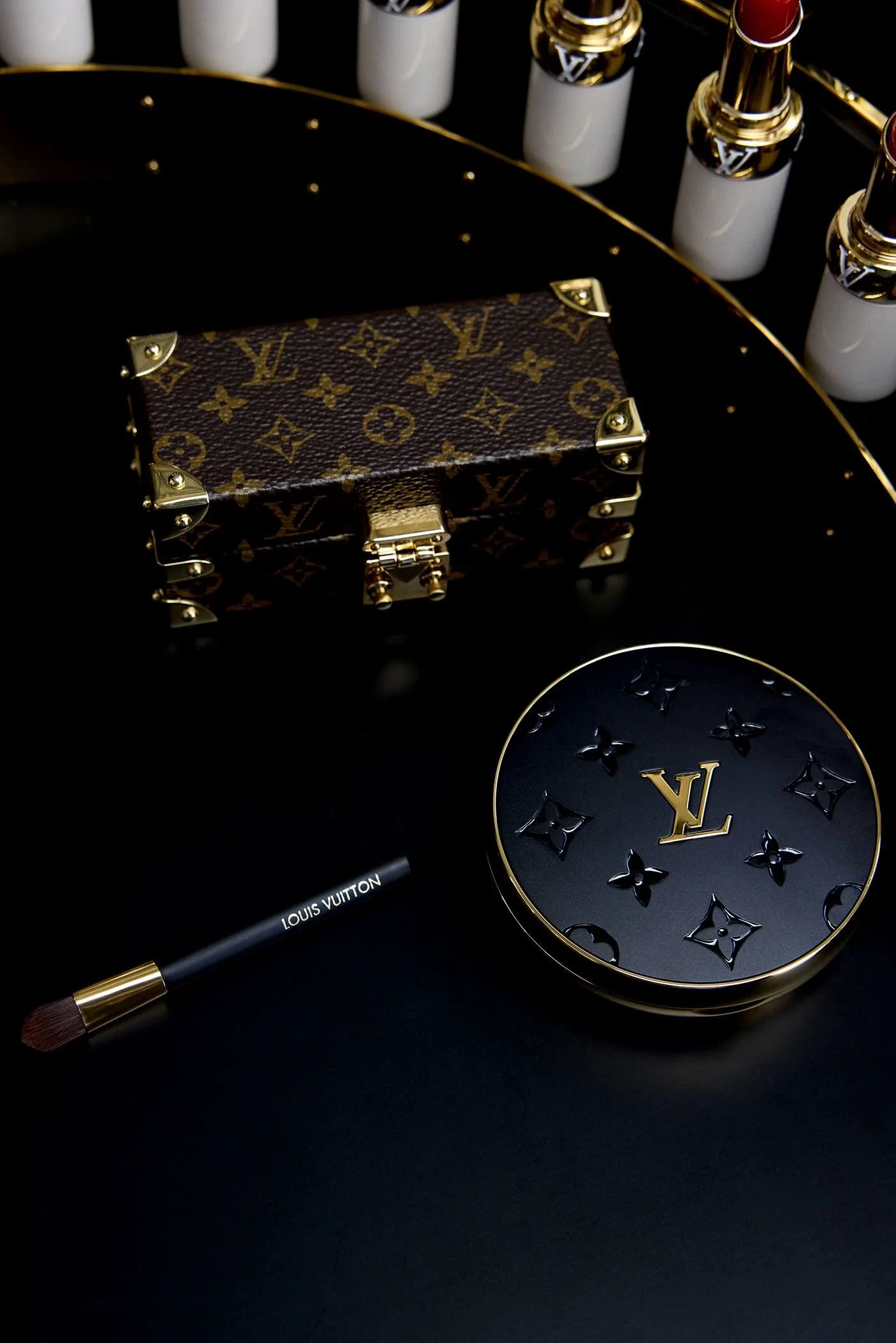
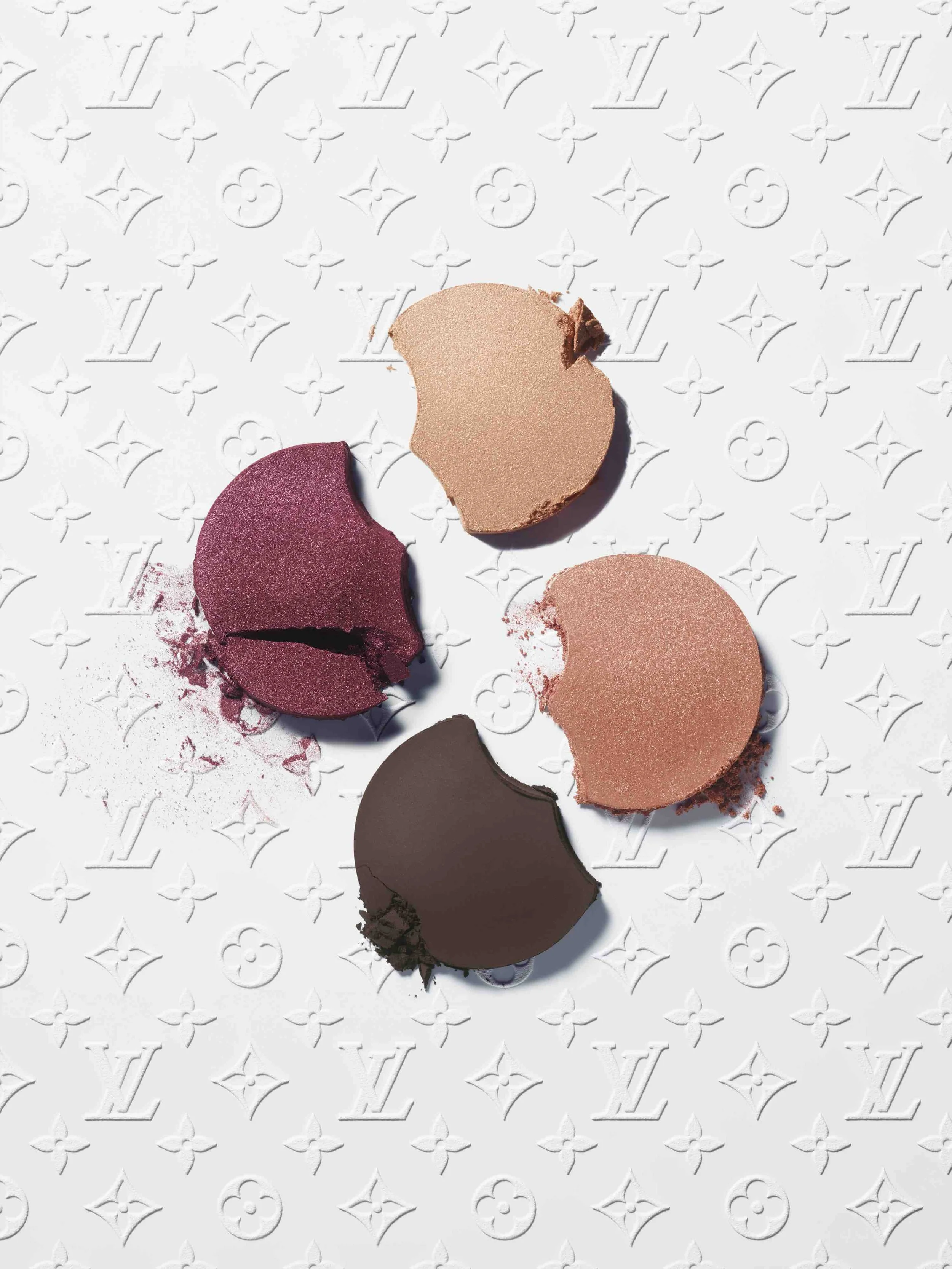
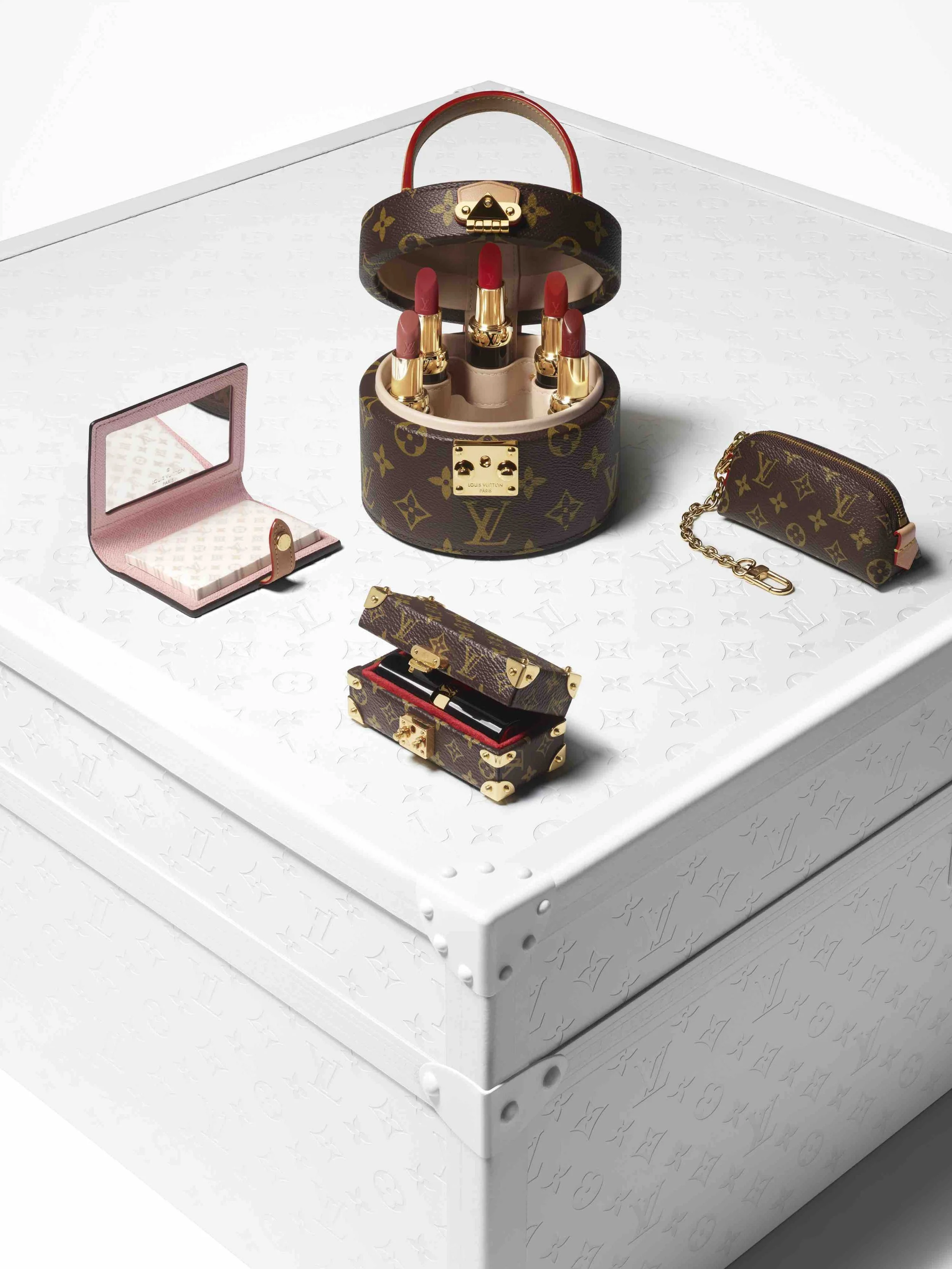
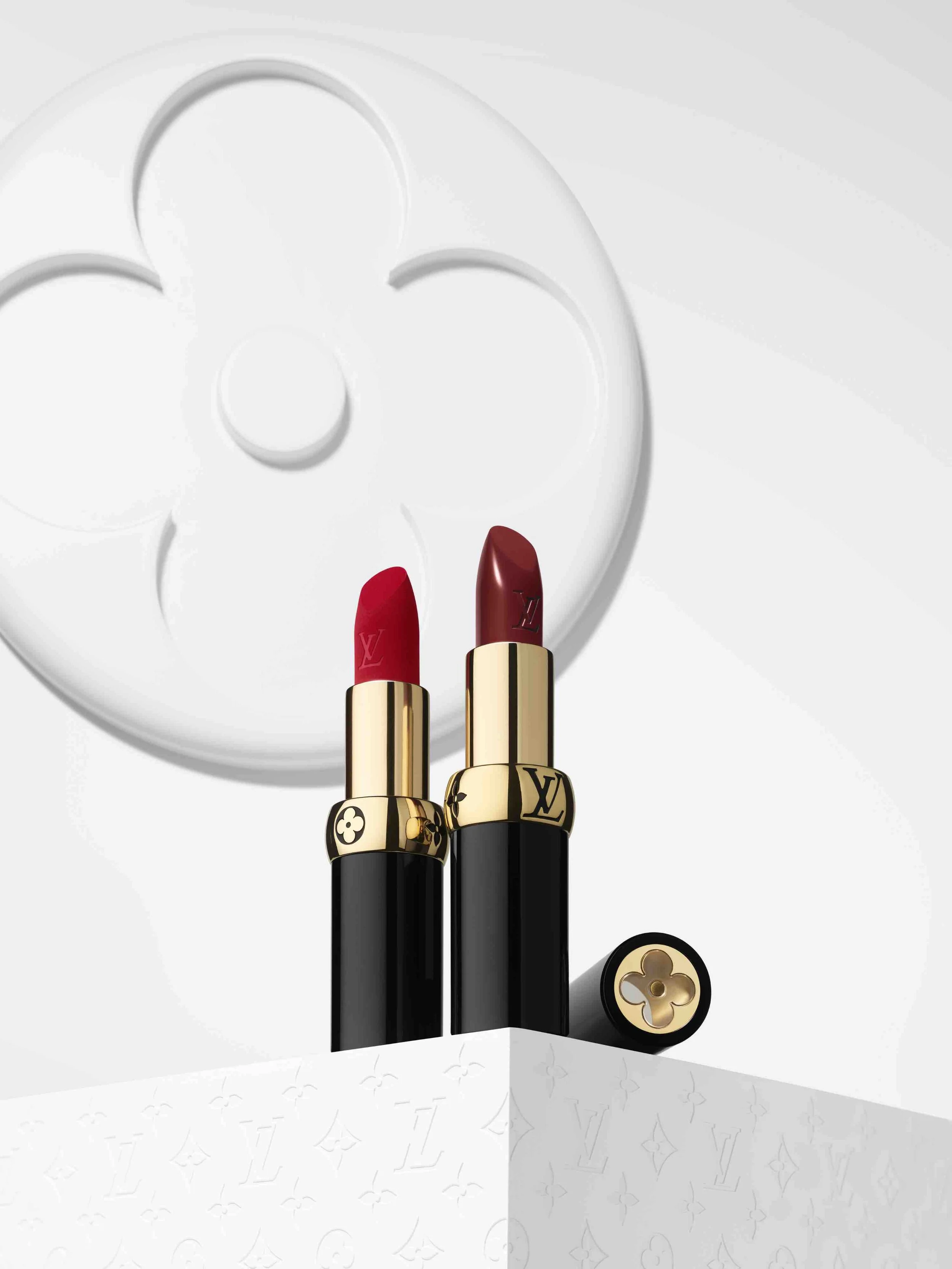
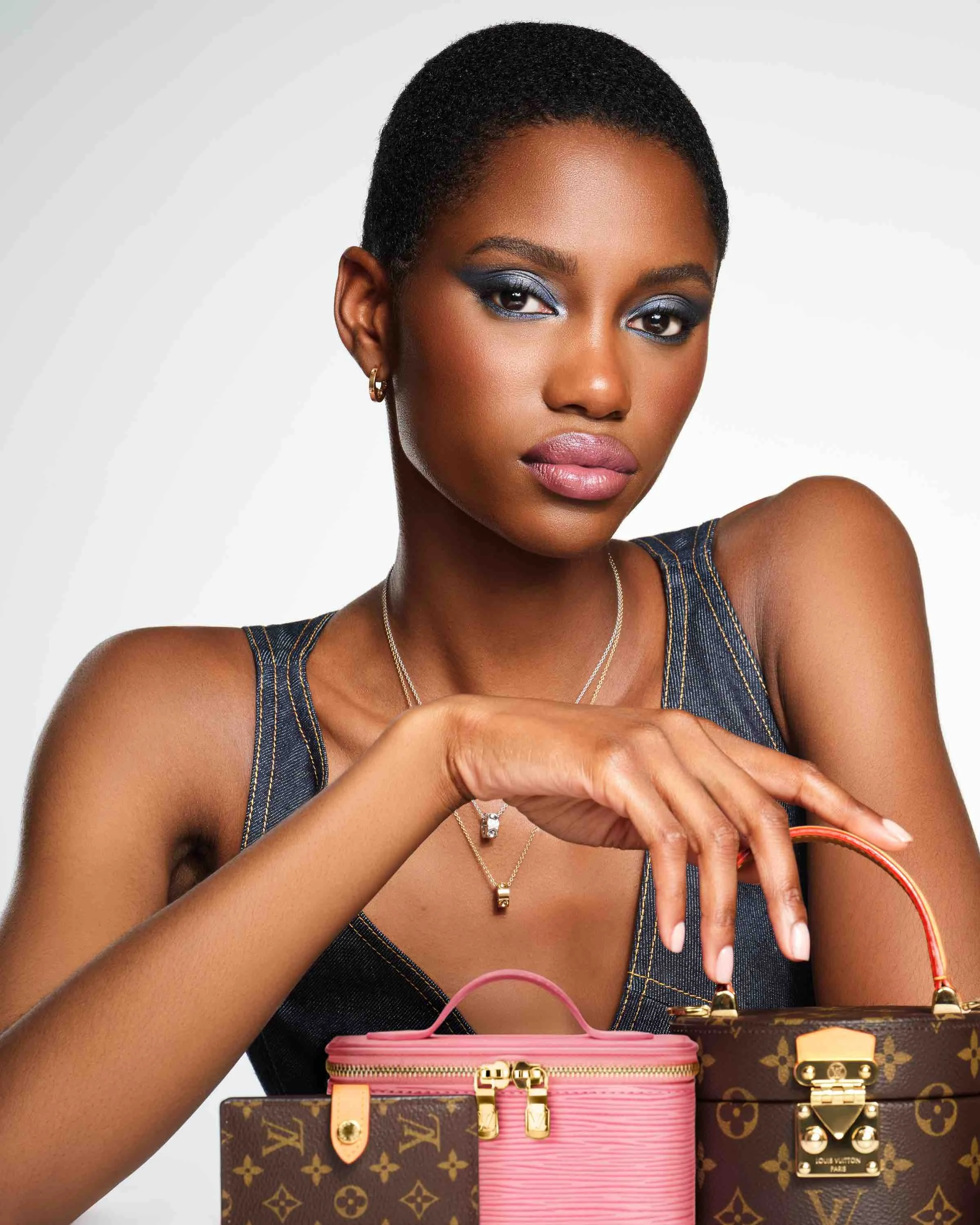

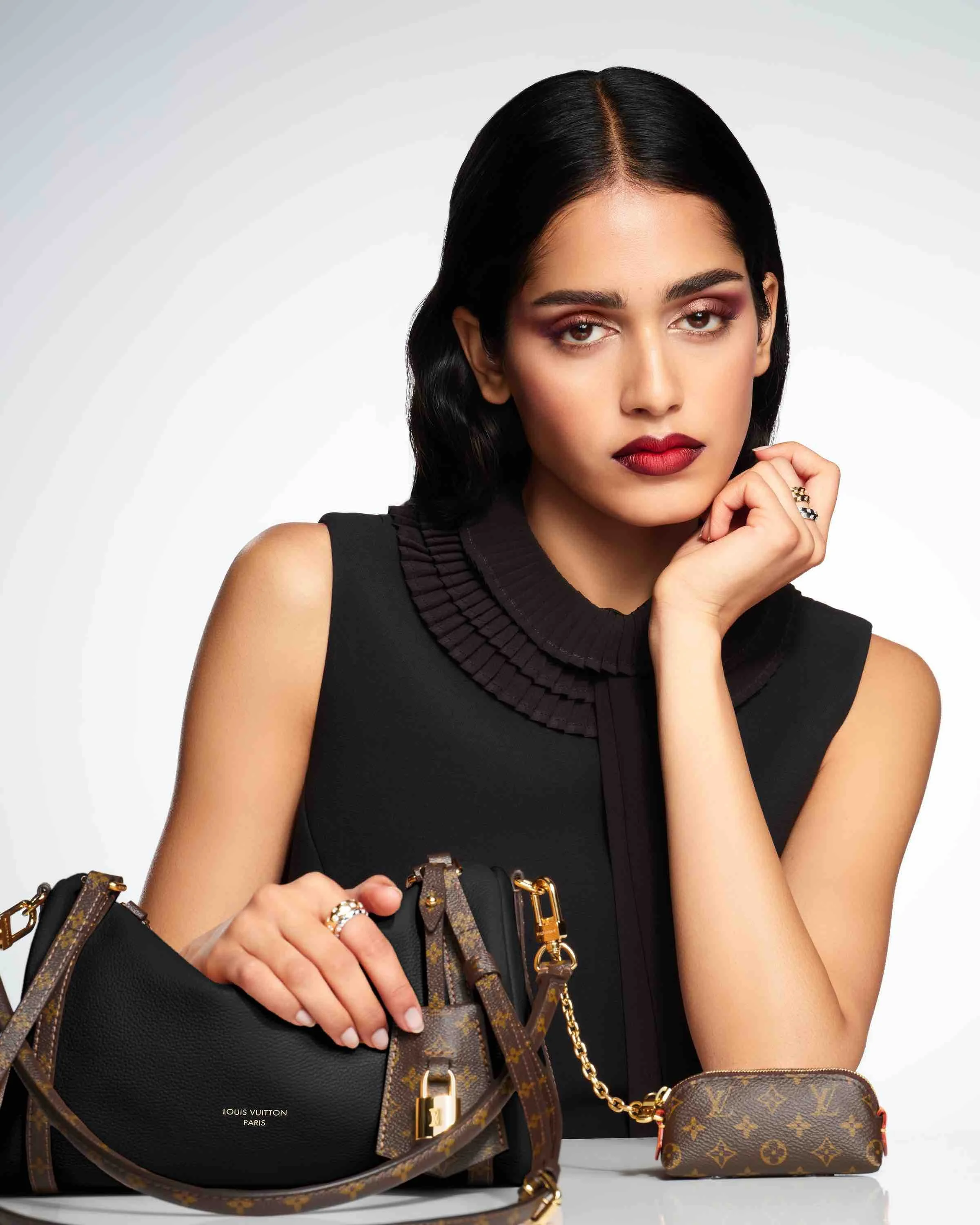
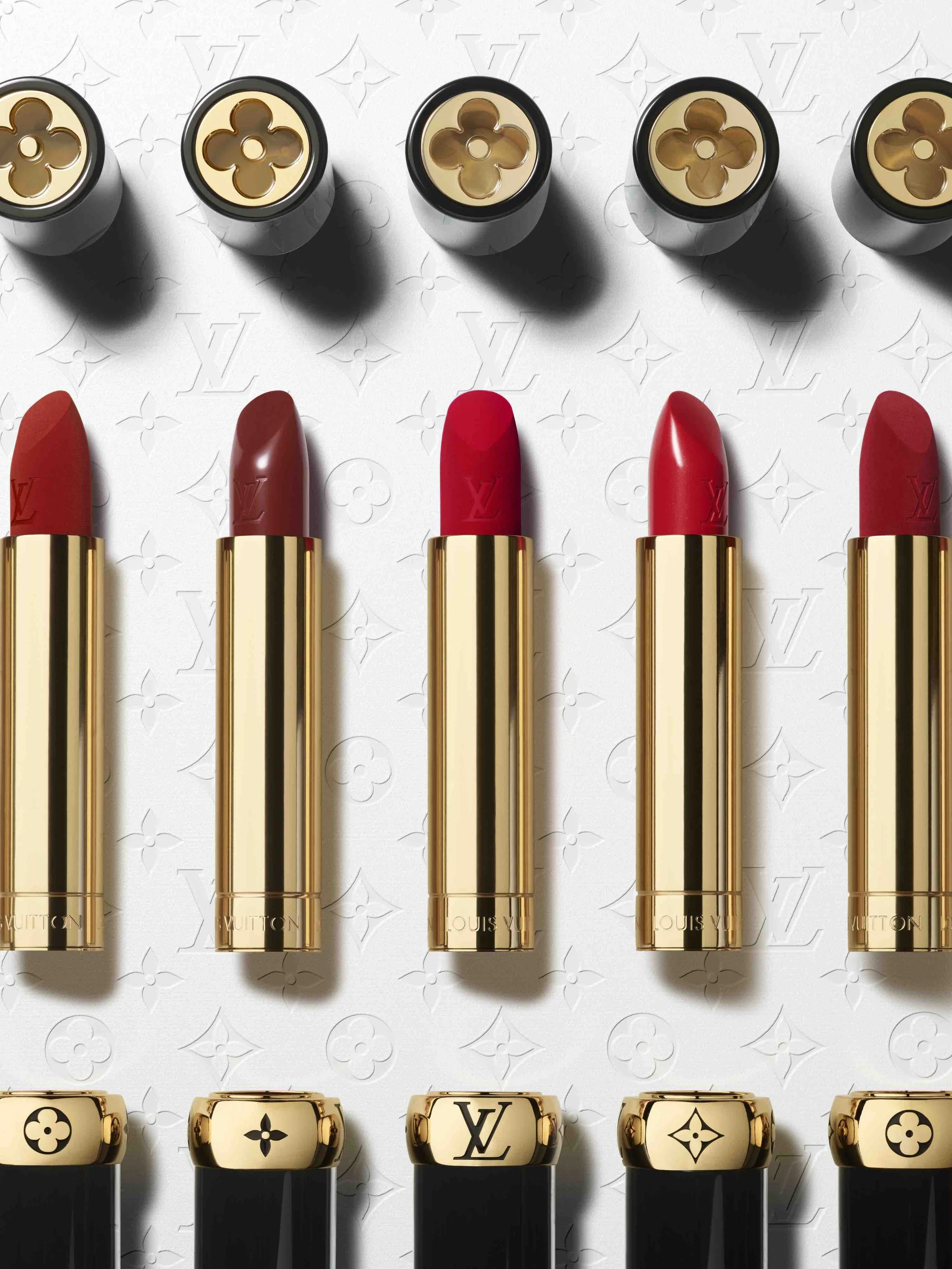
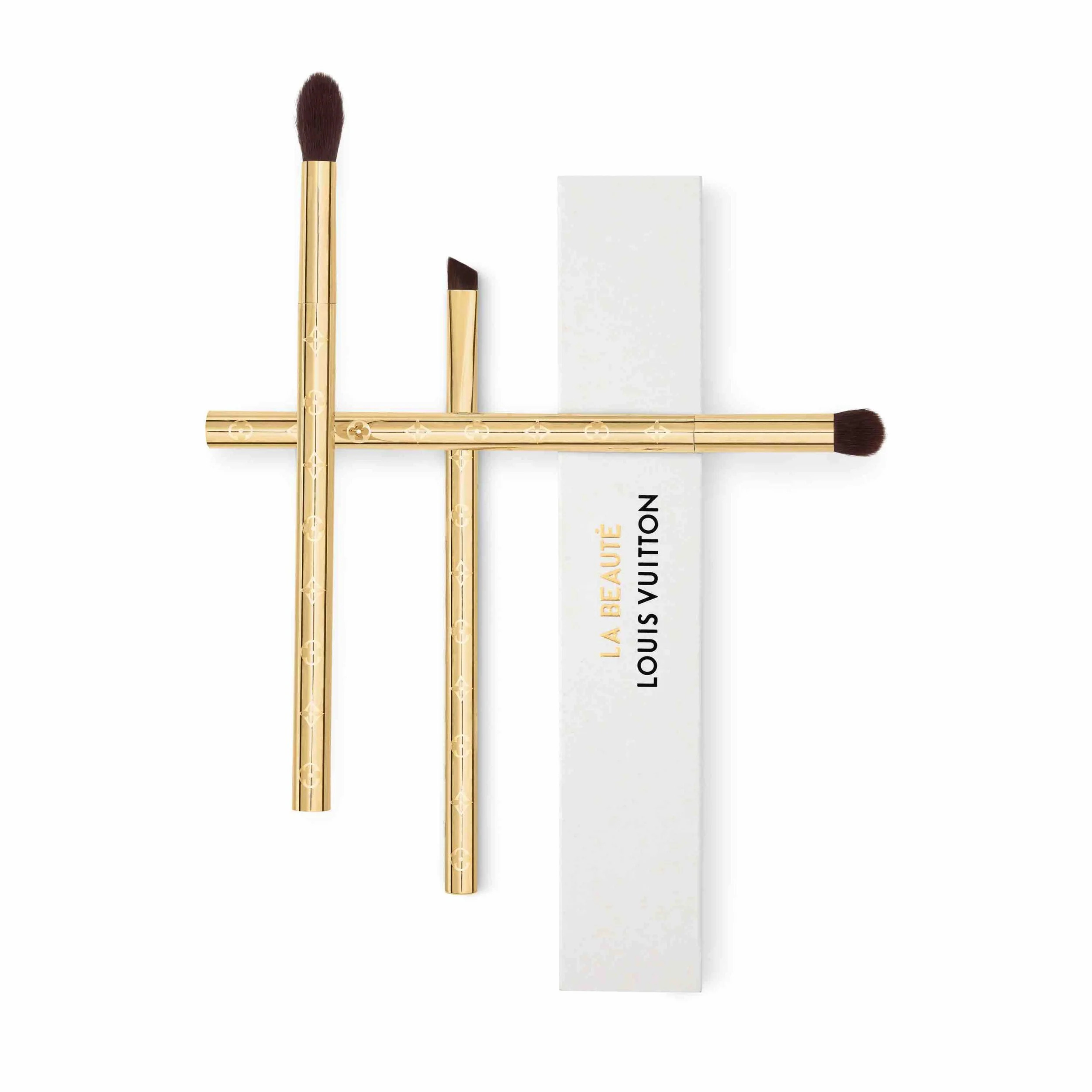
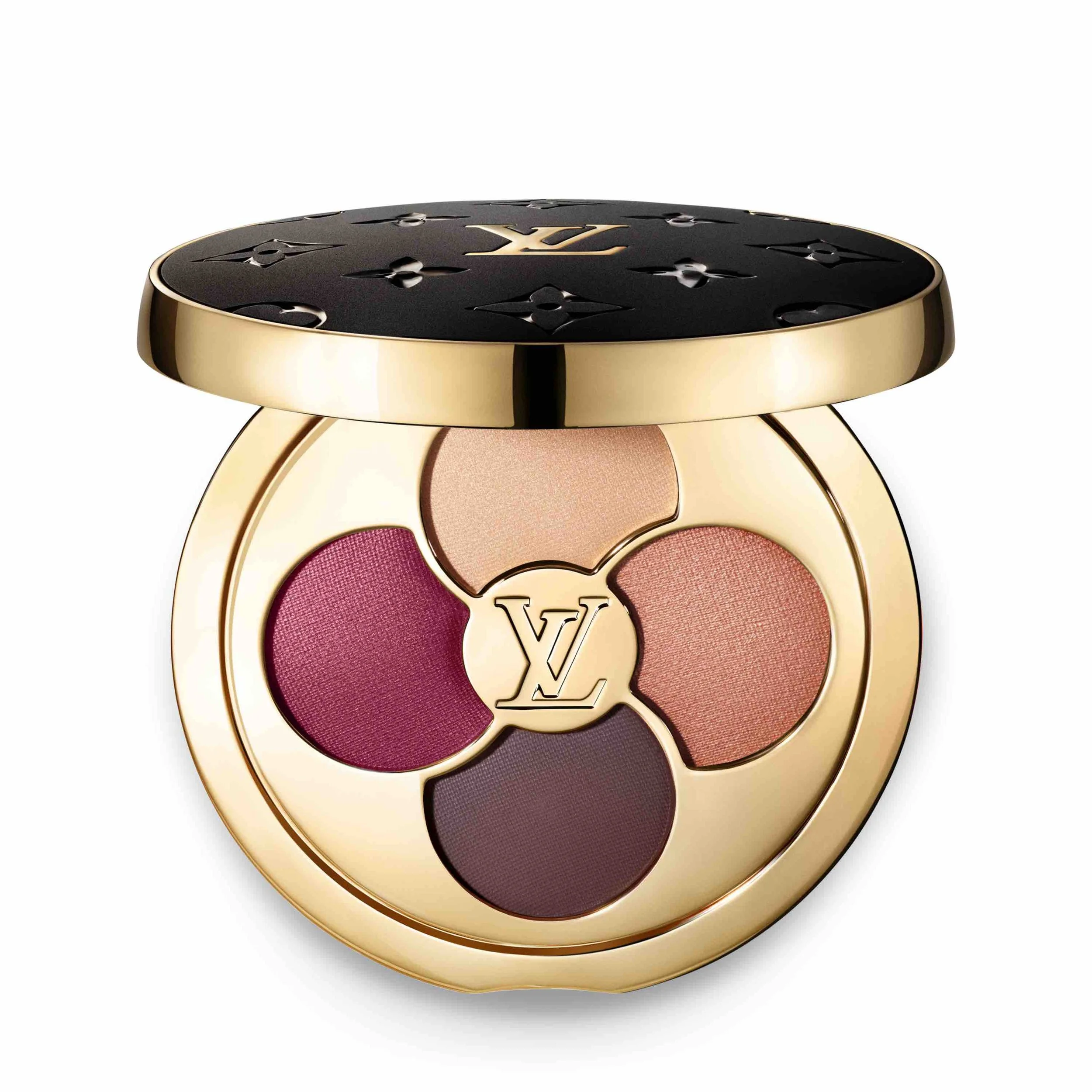
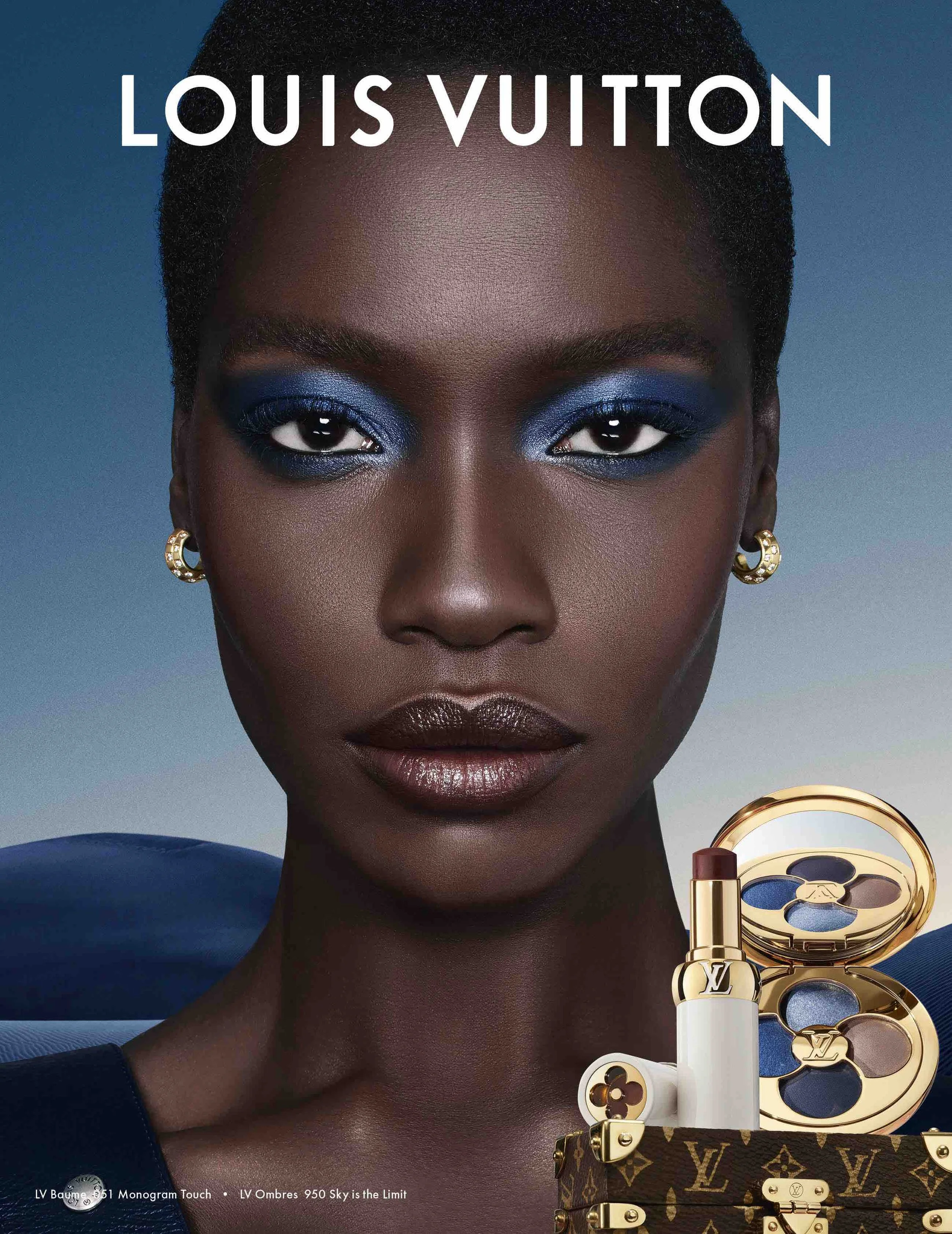
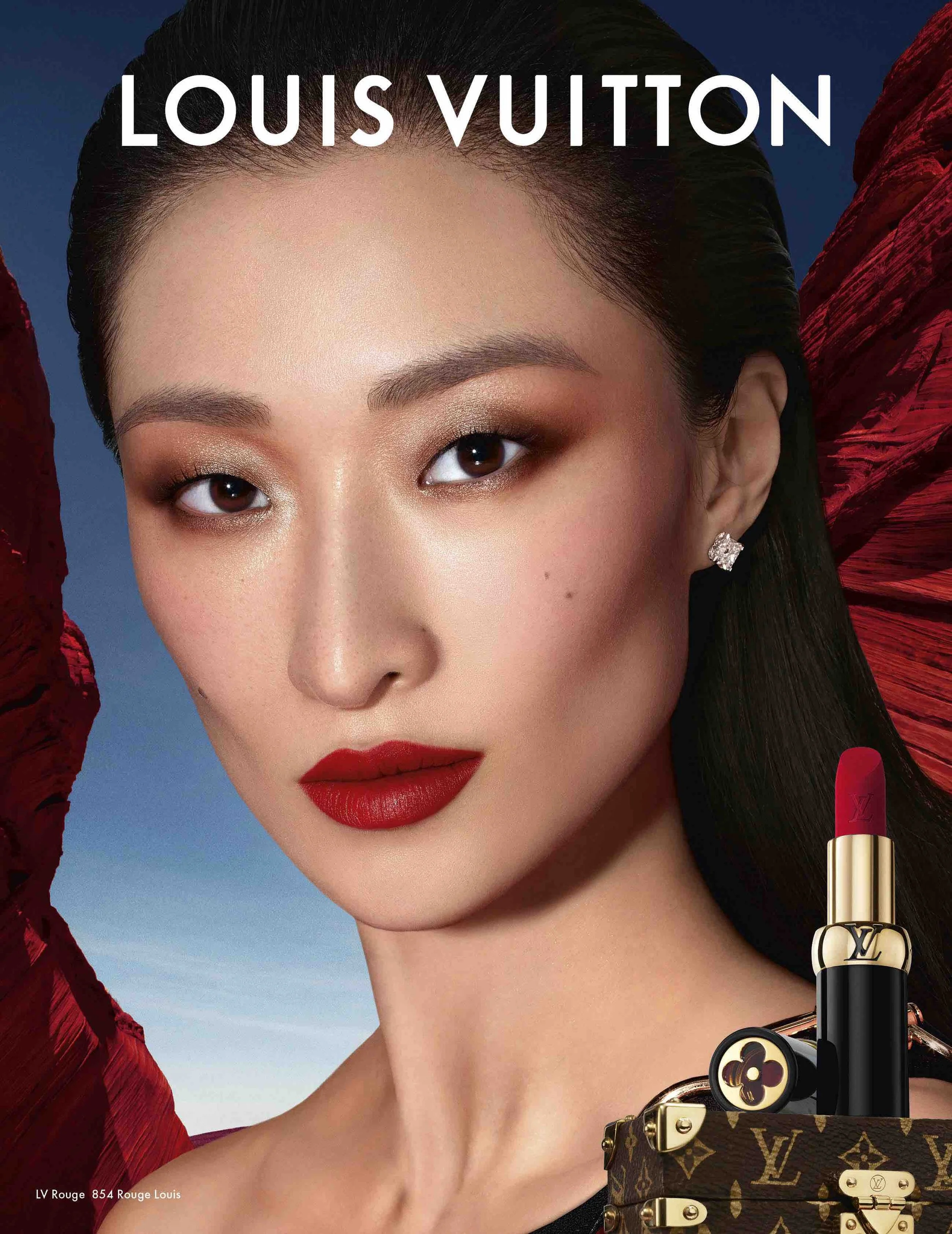

Notes
Pat McGrath’s role
Pat McGrath, often referred to as the “most influential makeup artist in the world,” brings both credibility and spectacle to Louis Vuitton Beauty. Her own line, Pat McGrath Labs, launched in 2015, set new standards in pigmentation and theatrical presentation, making her partnership with Vuitton both symbolic and strategic.
The “lipstick index”
Traditionally, beauty has been viewed as the most democratic tier of luxury. Leonard Lauder coined the term “lipstick index” in the early 2000s, observing that lipstick sales often rise during economic downturns as consumers reach for small, affordable luxuries. Vuitton’s heirloom-priced debut redefines this entry point, pushing it far beyond reach.
Luxury beauty precedents
Vuitton is not the first fashion house to enter beauty, but its positioning is notable. Chanel, Dior, and YSL have long dominated luxury cosmetics, yet their products remain priced within a “premium accessible” range. Vuitton deliberately moves higher, aligning its beauty products not with cosmetics counters but with trunks, jewelry, and leather goods.
From beauty as play to beauty as preservation
The move signals a cultural shift. Beauty historically carried intimacy and experimentation — from 20th-century Revlon campaigns encouraging self-expression to Fenty Beauty’s launch in 2017, which emphasized inclusivity and play. Vuitton’s reframing of makeup as collectible reflects a different logic: preservation, ownership, and status.
Consumer fatigue
Beauty fatigue is real. With an average of hundreds of product launches each month globally, consumers are overwhelmed by sameness. A 2024 McKinsey report on beauty highlighted “launch fatigue” as a key industry challenge, noting that novelty alone no longer drives growth. Vuitton’s move sidesteps this cycle by rejecting mass appeal in favor of scarcity.
The risk of exclusion
Beauty has often served as fashion’s bridge to the masses — a Dior lipstick or a Chanel nail polish carried aspirational value without exclusion. Vuitton’s debut signals a departure from this logic. If other brands follow with inflated prices absent of innovation, beauty’s most democratic category risks losing the intimacy and accessibility that once defined it.